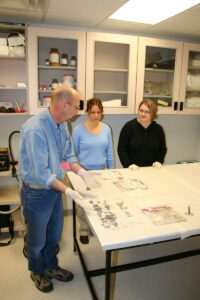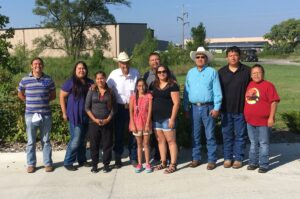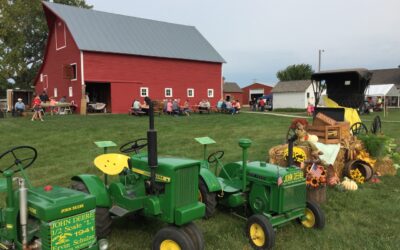Skeletal Remains and NAGRPA
As soils are moved or disturbed, buried human remains are sometimes exposed. Burials may be encountered during any earth-moving project, such as roadway and pipeline construction, farm pond excavation or terrace leveling, and residential or commercial developments. Burials may also be encountered as a result of natural erosion.
The State Archeology Office assists with the recovery, examination, and reburial of skeletal remains as the need arises.

Bozell consulting with state crime lab staff
What happens when unmarked human remains are discovered?
Local law enforcement should be contacted within 48 hours of the discovery. If the remains are not believed to be related to a recent crime or investigation, the sheriff’s office or county attorney will contact the SAO.
In archeological contexts, the most desirable outcome is to leave the remains in place through efforts such as soil stabilization or a modification to project plans.
When avoidance is not an option, the SAO will help to recover the burial and begin analyzing the remains for any identifying characteristics of age, sex, and affiliation.
Based on the analysis, if the remains are found to be Native American, the process of consultation and repatriation will begin, as detailed in state and federal law. If the remains are found to be non-Native American, in the absence of identifiable relatives, the remains will ultimately be reburied by the county in a local cemetery.
Repatriation
Prior to the late twentieth century, human remains were often removed from their burial places for research purposes and as a result of development. The recovered remains were then stored in public and private collections across the country. By the 1970s, Native American groups began to express their indignation for such practices and resentment for the storage of their ancestors’ remains in museum warehouses.

Members of the Northern Cheyenne Tribe taking possession of ancestral remains discovered near Fort Robinson.
By the early 1990s, a series of state and federal laws were enacted with the intent to protect burial sites and repatriate human remains and associated funerary objects to descendent groups when encountered. At the time, the SAO held hundreds of individuals’ remains in our collections as a result of donations, inadvertent discoveries, and research. These laws directed our office to determine as specifically as possible who the remains were related to and to work with descendant groups on repatriation. The same laws continue to guide our response to unmarked burials and human remains today.
Between 1990 and 2017, the SAO repatriated the remains of nearly 700 individuals and over 30,000 artifacts from about 80 sites across Nebraska. These remains have been returned largely to the Pawnee Nation of Oklahoma with additional remains repatriated to the Northern Ponca, Ioway, Oto-Missouria, Omaha, Wichita, Arikara, and Northern Cheyenne tribes. The SAO is now left with the remains of over 500 Native American individuals and 15,000 funerary items which cannot be affiliated with a specific tribe due to insufficient information. Our office is currently in consultation to develop a joint repatriation of these unaffiliated remains to all tribes that have now, or may have in the past, called Nebraska home, with the aim of reburial in 2018.
Laws
Unmarked Human Burial Sites and Skeletal Remains Protection Act (Nebraska State Statutes 12-1201 through 12-1212) [1989].
Native American Graves Protection and Repatriation Act – NAGPRA (25 U.S.C. 3001 et seq.) [November 16, 1990].
Visit our Compliance Laws and Regulations page for more information on these and other laws that affect Archeology in Nebraska.
Become a Member!
Our members make history happen.



